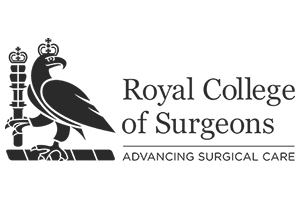In patients who have had previous abdominal surgery of any type, the scar from that previous surgery represents a further potential weak area of the abdominal wall that hernias can occur through. These are called incisional hernias, and vary hugely in size and complexity. Because the tissue around the hernia will have been affected by the previous surgery, the management of these incisional hernias varies from how primary hernias in the same location are managed.
The risk of developing incisional hernias is increased by a number of conditions or scenarios present during the index surgery:
- Smoking
- Poorly controlled diabetes
- Surgical site infection
- Obesity
- Immunosupression
- Midline incisions
None of these factors guarantee incisional hernias, and some patients unfortunately form incisional hernias without any of these risk factors.
If clinical examination clearly identifies a hernia and the defect (gap) in the abdominal wall, imaging is not needed for a diagnosis.
The European Hernia Society recommends using CT scans in patients with incisional hernias either as a planning tool for surgery or as a diagnostic tool in patients with equivocal examination findings. In patients where the radiation exposure of a CT is a concern (eg pregnancy), ultrasound or dynamic MRI (MRI with straining) are recommended.
Patients with reducible incisional hernia (the hernia lump can be pushed back inside), the risk of an acute hernia complications (eg obstruction or strangulation) is low (1% in the first year, 2.5% by 5 years).
The most important indication for surgery to repair incisional hernias is symptoms impairing quality of life. This is also the most important outcome measure for success.
Patients with very large incisional hernias (10cm diameter or more) should be assessed by an expert in abdominal wall reconstruction. For hernias of this size, specialised techniques to allow closure of the hernia defect may be required, including Botox injection pre-operatively, component separation surgery, as well as joint surgery with plastic surgeons if muscle flaps are needed.
We follow the guidance from the Danish Hernia Registry in planning incisional hernia repair.
Patients must be non-smokers or ex-smokers for at least 6 weeks pre-op.
Patients should have a BMI <35 (and be on a weight loss trajectory)
Patients should have goo diabetes control (HbA1c <60mmol/mol)
If patients meet these criteria, we determine which procedure to offer based on the total defect size (some patients have multiple holes in a pervious incision – we add these up to determine the total size)
- 0-2cm defect: open repair, with mesh if >1cm.
- 2-6cm defect: either open (Rives-Stoppa) repair with mesh for larger defects, or laparoscopic repair with defect closure and mesh (IPOM) repair if <5cm and compliant abdominal wall.
- 6-10cm defect: open (Rives-Stoppa) repair with mesh. Some patients with defects approaching 10cm would be referred to an abdominal wall reconstruction specialist.
Given the huge variation in presentation and hernia types, risks of surgery are individualised at the time of consultation. Likewise, in hospital and post-discharge recovery vary depending on the patient’s background conditions, type of repair surgery required and immediate post-operative recovery. You can discuss these with your surgeon in your consultation.







